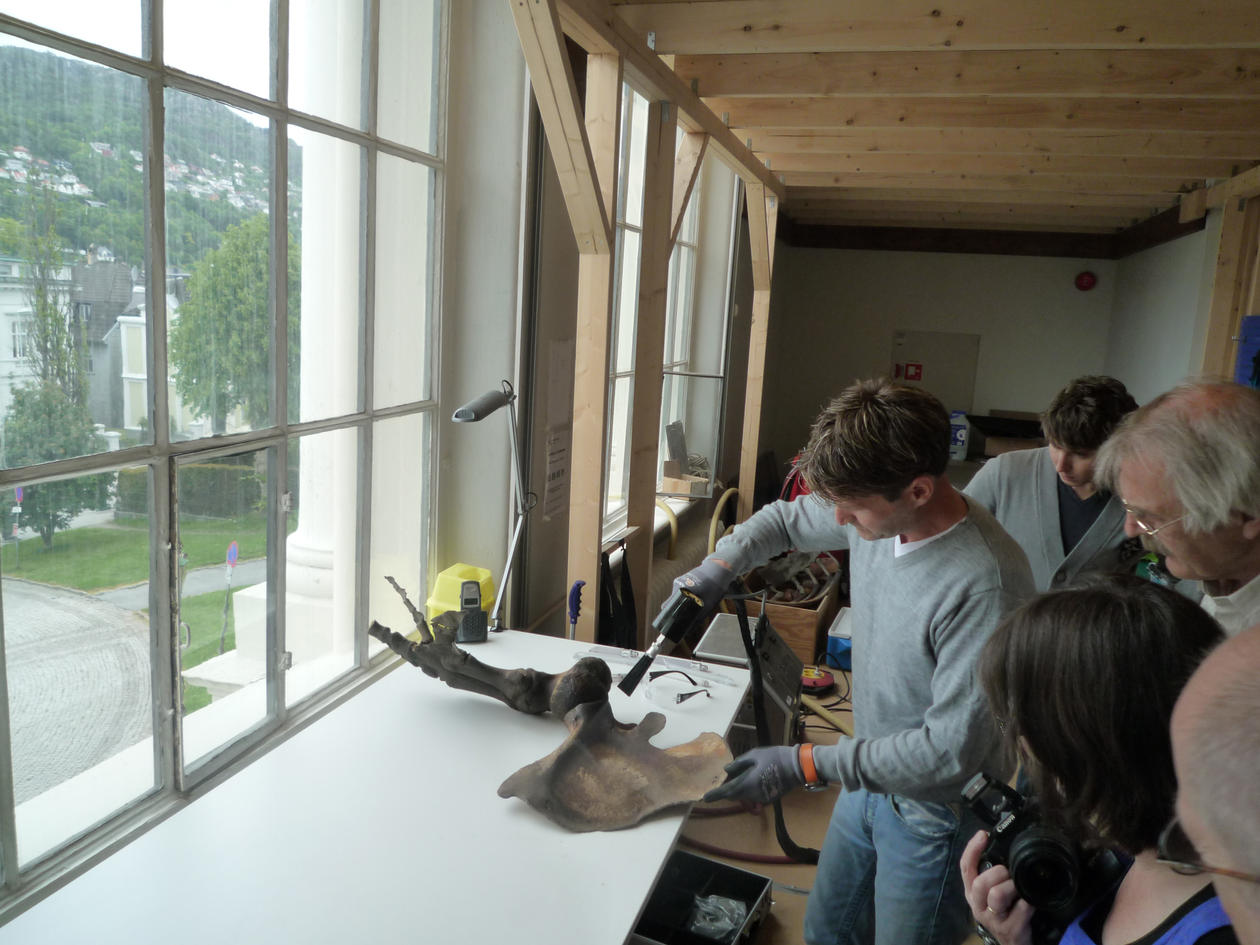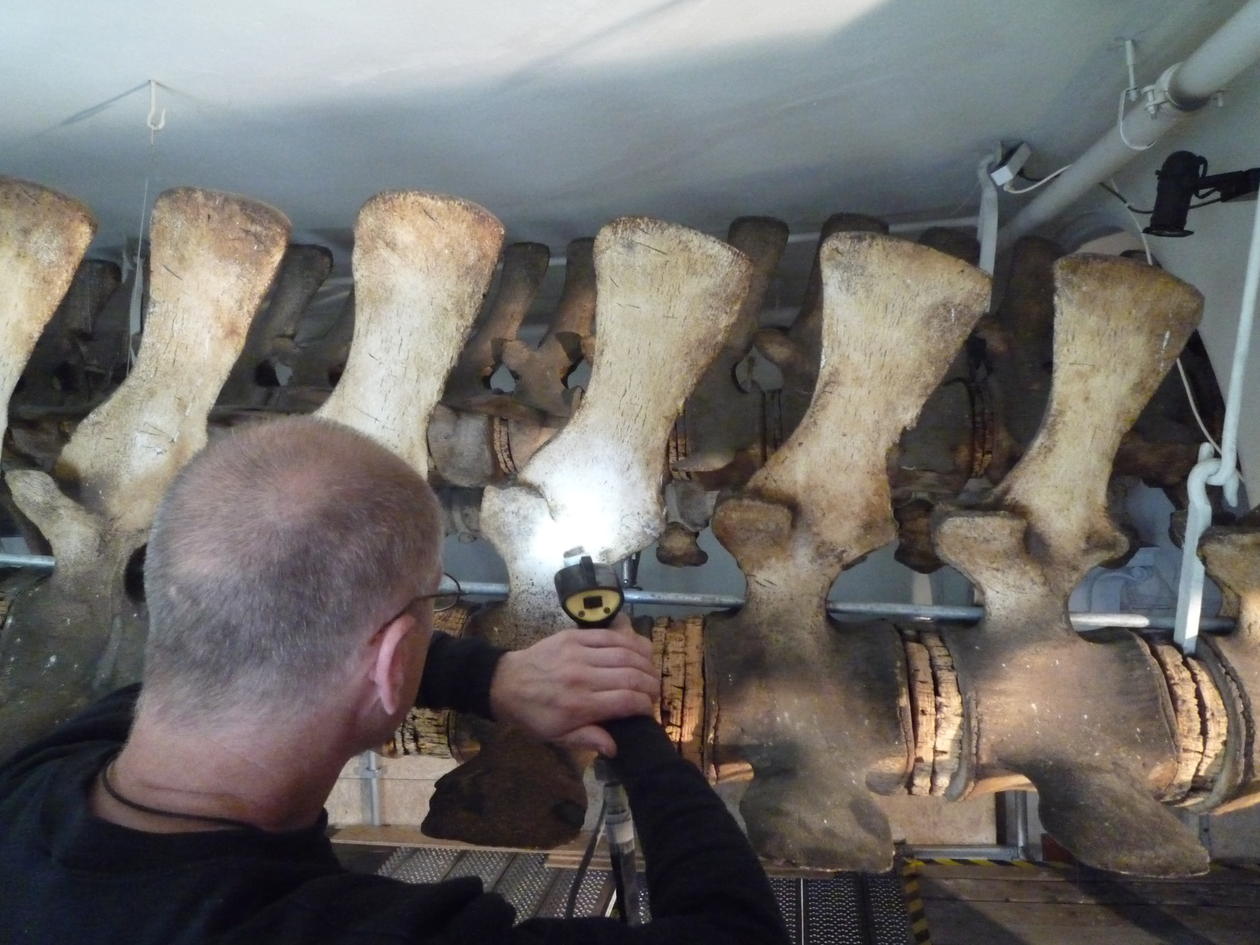To Clean a Whale
Over the next two years, the valuable collection of whale skeletons at Bergen Museum will be cleaned, restored and secured.
Main content
An international team with competence in conservation and anatomy has since spring this year been in full swing with the unique Whale Project. The aim is to get the impressive whale skeletons from the 1800s in tip-top condition for the general public and researchers. The initial phase of the project consists of documentation and testing of various cleaning methods.
A Unique Collection
The skeletons in the Whale Hall constitute in many ways the very heart of the collections at the Natural History Collections, and they are to a very high degree unique. The collection is old. The majority of the animals date back from the 1800s. Some of the skeletons are somewhat fragile, and the surface has generally been soiled by oil which over time has been seeping out from the interior of the bones. The skeletons have naturally collected a lot of dust through the years and look very dirty.
The Whale Bone Blog
The Whale Team holds specific competencies in conservation and anatomy and its members are Gordon Turner Walker (head of team), Catherine Hellier, Marielle Berg and Zina Fihl, and the Museum’s in-house conservator Christina Holmefjord.
From the new Whale Bone Blog, you will get the latest news and may comment on this exciting project.
Pioneering Work
This type of work has to a lesser degree been carried out previously, and there are few experiences from similar collections around the world. The whale team therefore uses different methods for cleaning and conservation. It is particularly important to avoid disturbing the material in such a way that it loses it scientific value.
The treatment ought to be both effective and gentle. The classical method is using a special vacuum cleaner and after that cleaning the surface with various solvents. It works well, but it is a detailed and time-consuming method.
To clean the skeletons, the team is now trying out the use of dry ice as one of several possible and supplemental methods. The results show that this method worked well on some of the bones. On other parts of the bones, the method was not sufficiently effective. Whether the method works, will depend on many factors, such as the amount of fat content in the bone, to what degree the material of the bones has been broken down, and on the kind of power and type of nozzle that are used on the hose.
The Whale Hall on the Internet – now also available in German
On the web pages of Bergen Museum, you will find a comprehensive presentation of the Whale Hall in both Norwegian and English. The presentation is now also available in German.
You can also read more about the Whale Project in the local daily newspaper “Bergens Tidende” (1.6.2010) and the University of Bergen’s online newspaper “På Høyden” (26.5.2020)



